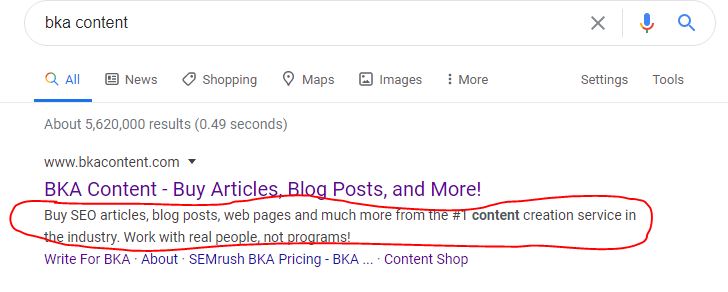Why Your Blog’s Name Matters in the Digital Age
In today’s digital landscape, establishing a strong online presence is crucial for bloggers, entrepreneurs, and businesses alike. A well-crafted blog name serves as the foundation of this presence, playing a significant role in shaping the identity and tone of your online platform. When considering what to name your blog, it’s essential to recognize the impact of this decision on your brand’s overall success.
A unique and memorable blog name can make all the difference in attracting and retaining readers. It’s the first impression that visitors will have of your blog, and it can greatly influence their perception of your content and tone. A clever and catchy name can also improve your blog’s visibility in search engine results, making it more discoverable for potential readers.
Moreover, a well-chosen blog name can contribute to a strong brand identity, setting you apart from competitors and establishing your authority in your niche. It’s an opportunity to convey your values, personality, and tone, helping to build a loyal community of readers who resonate with your message.
When deciding what to name your blog, it’s crucial to consider the long-term implications of your choice. A name that may seem clever or trendy today may become outdated or irrelevant in the future. Instead, opt for a name that is timeless, versatile, and aligns with your blog’s mission and values.
Ultimately, your blog’s name is a critical component of your online presence, and its impact should not be underestimated. By choosing a name that is both memorable and meaningful, you can establish a strong foundation for your blog’s success and set yourself up for long-term growth and engagement.
Brainstorming Techniques to Spark Inspiration
When deciding what to name your blog, it’s essential to generate a list of ideas that reflect your brand’s identity and tone. One effective way to do this is by using word associations. Start by writing down keywords related to your blog’s content, and then brainstorm a list of words that are associated with each keyword. For example, if your blog is about travel, you might start with keywords like “adventure,” “exploration,” and “wanderlust.” From there, you can generate a list of associated words like “passport,” “map,” and “compass.”
Another technique is to use alliterations, which can make your blog’s name more memorable and engaging. For instance, if your blog is about food, you might consider names like “Savoring the Flavor” or “The Tasty Table.” Alliterations can add a touch of creativity and whimsy to your blog’s name, making it more likely to stand out in readers’ minds.
Personal experiences can also be a rich source of inspiration for your blog’s name. Consider your own experiences, passions, and interests, and think about how they might be reflected in your blog’s name. For example, if you’re a blogger who loves hiking, you might consider a name like “Trail Tales” or “The Hiking Diaries.” By drawing on your personal experiences, you can create a name that is authentic and meaningful.
Additionally, you can try using online tools and resources to generate ideas for your blog’s name. Websites like Namecheap and GoDaddy offer domain name suggestion tools that can help you come up with ideas based on your keywords and preferences. You can also try using social media platforms like Twitter and Instagram to crowdsource ideas from your followers.
Remember, the key to brainstorming effective ideas for your blog’s name is to be creative and open-minded. Don’t be afraid to think outside the box and try out new ideas. With a little patience and persistence, you can come up with a name that perfectly captures the essence of your blog and resonates with your target audience.
How to Create a Catchy and Descriptive Blog Title
When it comes to choosing a name for your blog, it’s essential to create a title that accurately reflects your content and tone. A catchy and descriptive title can help attract and retain readers, while also improving your blog’s visibility in search engine results. So, how can you create a title that effectively captures the essence of your blog?
One approach is to use keywords that are relevant to your blog’s content. This can help your blog rank higher in search engine results, making it more discoverable for potential readers. However, it’s essential to use keywords in a way that feels natural and authentic, rather than forcing them into your title. For example, if your blog is about cooking, you might use keywords like “recipes,” “cooking tips,” and “foodie” to create a title that is both descriptive and catchy.
Another technique is to use puns and clever turns of phrase to make your title more engaging and memorable. For instance, if your blog is about travel, you might use a title like “The Wander List” or “Passport Diaries.” Puns and clever turns of phrase can add a touch of creativity and whimsy to your title, making it more likely to stand out in readers’ minds.
It’s also essential to consider the tone of your blog when creating your title. If your blog is serious and informative, you’ll want to choose a title that reflects that tone. On the other hand, if your blog is lighthearted and humorous, you can use a title that is more playful and irreverent. For example, if your blog is about humor, you might use a title like “Laugh Out Loud” or “The Comedy Corner.”
Ultimately, the key to creating a catchy and descriptive title is to find a balance between creativity and clarity. Your title should be unique and memorable, while also accurately reflecting the content and tone of your blog. By using keywords, puns, and clever turns of phrase, you can create a title that effectively captures the essence of your blog and resonates with your target audience.
The Power of Keywords in Your Blog’s Name
When it comes to choosing a name for your blog, keywords play a crucial role in search engine optimization (SEO). By incorporating relevant keywords into your blog’s name, you can improve your blog’s visibility in search engine results and attract more targeted traffic. However, it’s essential to use keywords in a way that feels natural and authentic, rather than forcing them into your title.
So, how can you incorporate keywords into your blog’s name without sacrificing creativity or readability? One approach is to use keywords that are relevant to your blog’s content and tone. For example, if your blog is about cooking, you might use keywords like “recipes,” “cooking tips,” and “foodie” to create a title that is both descriptive and catchy.
Another technique is to use long-tail keywords, which are more specific phrases that have lower search volumes but are also less competitive. For instance, if your blog is about travel, you might use a long-tail keyword like “backpacking in Europe” or “budget travel tips.” Long-tail keywords can help you attract more targeted traffic and improve your blog’s visibility in search engine results.
It’s also essential to consider the keyword density of your blog’s name. Aim for a keyword density of 1-2% to ensure that your title is optimized for search engines without appearing spammy. You can use tools like Google Keyword Planner or Ahrefs to analyze your keyword density and optimize your title accordingly.
Finally, remember that keywords are just one aspect of a successful blog name. Your title should also be memorable, easy to spell, and easy to pronounce. By incorporating keywords into your blog’s name in a way that feels natural and authentic, you can improve your blog’s visibility in search engine results and attract more targeted traffic.
Avoiding Common Pitfalls in Blog Naming
When choosing a name for your blog, it’s essential to avoid common pitfalls that can make your blog’s name less effective or even detrimental to your online presence. One common mistake is using numbers or special characters in your blog’s name. While these may seem like a good way to make your name more unique, they can actually make it harder for readers to remember and spell your blog’s name.
Another mistake is being too generic or too specific with your blog’s name. A name that is too generic may not stand out in a crowded online space, while a name that is too specific may limit your blog’s scope and appeal. For example, a blog named “Cooking Blog” may be too generic, while a blog named “Vegan Gluten-Free Recipes” may be too specific.
It’s also crucial to check for domain name availability before finalizing your blog’s name. You don’t want to choose a name that is already taken by another website or blog, as this can cause confusion and make it harder for readers to find your blog. You can use online tools such as GoDaddy or Namecheap to check for domain name availability and register your desired domain name.
Additionally, avoid using names that are too long or too complicated. A name that is easy to spell and remember is essential for building a strong brand and attracting readers. You should also avoid using names that are too similar to existing trademarks or brand names, as this can lead to legal issues and confusion.
Finally, don’t forget to consider the tone and personality of your blog’s name. Your name should reflect the tone and personality of your content and brand, and should appeal to your target audience. By avoiding common pitfalls and choosing a name that is unique, memorable, and relevant, you can create a strong foundation for your blog’s success.
Examples of Successful Blog Names and What Makes Them Work
When it comes to choosing a name for your blog, it’s helpful to look at examples of successful blog names and analyze what makes them effective. One example is The Huffington Post, a popular news and lifestyle blog that has become a household name. The name is catchy and memorable, and it effectively conveys the blog’s focus on news and current events.
Another example is Smashing Magazine, a design and development blog that has become a go-to resource for web professionals. The name is clever and attention-grabbing, and it effectively conveys the blog’s focus on design and development.
What makes these blog names successful? One key factor is their use of language. Both names use simple, easy-to-remember words that are also descriptive and attention-grabbing. They also use a tone that is consistent with the blog’s content and target audience.
Another factor is branding. Both The Huffington Post and Smashing Magazine have strong brand identities that are reflected in their names. The names are consistent with the blogs’ logos, color schemes, and overall visual identities.
Finally, both names are memorable and easy to spell. This is important because it makes it easier for readers to find and remember the blog’s name, which can help to build a loyal following.
Other successful blog names include The Verge, a technology blog that uses a simple and descriptive name to convey its focus on technology news and reviews. Another example is Lifehacker, a productivity and lifestyle blog that uses a clever and attention-grabbing name to convey its focus on tips and tricks for improving your life.
By analyzing these examples, you can gain insights into what makes a successful blog name and how to create a name that effectively reflects your blog’s content and tone.
Finalizing Your Blog’s Name and Tagline
Once you have brainstormed a list of potential names for your blog, it’s time to finalize your choice and create a complementary tagline. Your tagline should capture the essence of your content and tone, and provide a clear idea of what readers can expect from your blog.
When finalizing your blog’s name, consider the following factors: memorability, uniqueness, and brandability. Your name should be easy to remember and spell, and it should be unique enough to stand out from other blogs in your niche. Additionally, your name should be brandable, meaning it should be easy to create a logo and visual identity around it.
Your tagline should be short and catchy, and it should provide a clear idea of what your blog is about. A good tagline should be no more than 2-3 sentences, and it should be written in a tone that is consistent with your blog’s content and tone.
For example, if your blog is about cooking, your tagline might be “Delicious recipes and cooking tips for the modern chef.” This tagline provides a clear idea of what your blog is about, and it is short and catchy enough to be memorable.
Once you have finalized your blog’s name and tagline, it’s time to start building your brand identity. This includes creating a logo, color scheme, and visual identity that reflects your blog’s tone and style. Your brand identity should be consistent across all of your online platforms, including your website, social media, and marketing materials.
By finalizing your blog’s name and tagline, and creating a strong brand identity, you can establish a professional and recognizable online presence that will help you attract and retain readers.
Launch and Promotion Strategies for Your Newly Named Blog
Once you have finalized your blog’s name and tagline, it’s time to launch and promote your blog to attract and retain readers. One effective way to do this is through social media marketing. Create social media accounts for your blog and share your content on platforms like Facebook, Twitter, and Instagram.
Another way to promote your blog is through content creation. Develop a content strategy that includes creating high-quality, engaging, and informative content that resonates with your target audience. Use keywords and phrases that are relevant to your blog’s niche to optimize your content for search engines.
Engagement strategies are also crucial for attracting and retaining readers. Respond to comments and messages promptly, and engage with your readers on social media. This will help build a loyal community around your blog and increase reader engagement.
In addition to social media marketing, content creation, and engagement strategies, consider other promotional tactics such as guest blogging, email marketing, and influencer outreach. These tactics can help increase your blog’s visibility and attract new readers.
Finally, consider optimizing your blog for search engines by using keywords and phrases in your content, meta tags, and descriptions. This will help improve your blog’s visibility in search engine results and attract more organic traffic.
By implementing these launch and promotion strategies, you can effectively promote your newly named blog and attract and retain readers. Remember to track your progress and adjust your strategies as needed to ensure the success of your blog.





